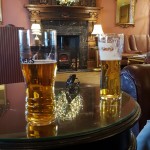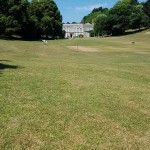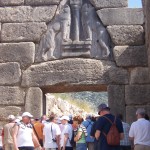Block10. CoVid Museum?
….. The bar you could no longer drink in?
The restaurant meal you couldn’t have…
….. The park you weren’t allowed to visit
The holiday you couldn’t take …..
I guess that most ‘History’ is made of dates, events and things remarkable being done and most museums full of artefacts that bear witness to those happenings …. but what does one do to record, remember and faithfully transmit to future generations a period of time more often signified by the absence of things rather than their presence, by societal restriction rather than individual freedom: how does one capture this volte-face that society has had to endure? If, once we have (hopefully) laid CoVid behind us, how will we present and explain this period to future generations?
To my mind at least, this requies us to think right now about what we should be saving, storing and recording…. is it a case of physical things like different types of masks (or statistics about the low numbers of masks at the start of the crisis!)… or of, say, the intangible feelings of students (and staff!) being shifted at a moment’s notice from face-to-face in the classroom to a digitally-enabled, distance-learning mode of delivery. Clearly, it is both and so much more….
Perhaps it is impossible for one museum or archive to record the whole, global CoVid story, but one could imagine something more manageble, local and accessible ….
Here is the situation I want you to address. I am ‘imagineering‘ – a Disney term combining imagination and engineering – that M1 Mus&Arch receives a joint commission from the Directrice of the Kunsthalle and the Director of Mulhouse Archive (within FSESJ) and the Dean of the FSESJ to produce a specification for a permanent archive and long-term (and evolving) exhibition on the subject of: ‘Living & learning in a time of CoVid‘ (a gentle hommage / clin d’oeil to Gabriel Garcia Marquez’ Love in a time of Cholera title). The focus is to be unashamedly upon UHA, and more specifically upon living & learning (and teaching is part of that, of course) by students and staff at the Fonderie. As an aside, do remember that we have staff who teach, academic administrators (scolarité), non-academic administrators who run the building and manage the staff and many other staff who do things that have suddenly assumed a far greater importance (like cleaning, for example …. do spare a moment to thank them, won’t you: they have been our defensive frontline and protection throughout the crisis).
INSTRUCTIONS.
- Consider the above ‘commission’ together to brainstorm across Arch and Mus the issues that appear to arise from the commission and how you might go about getting started. A good point to discuss to begin with might be what IS a specification for this sort of project … what does a brief ‘look like’? NB. Quite often, when clients don’t know how to do something themselves they call upon ‘consultants’… but they don’t always know exactly what they want or how to contain this in a brief. If you don’t feel that the brief is developed enough – you need to hold a meeting with your client (me, in this case) to get the specification right and clear.
- Split into two groups: 1. Arch and 2. Mus and work on developing your respective ‘specifications’ in response to this commission.
- Present your team’s initial ideas to me in role as intermediary between the Kunsthalle Directrice, the Archive’s Director and the Dean and I will give you my feedback so you can develop and improve your ideas and your English expression.
- Produce your specification (1x Arch + 1x Mus) in hard copy accompanied by a presentation which explains and justifies your ideas and offers some examples of the type of output you envisage producing. The presentation will be made by each team. Depending upon the situation prevailng (CoVid) it may be face-to-face in the classroom, live Zoom or with asynchronous recordings. Remember: this needs to be compelling: your material is likely to be used to convince funding sources like UHA and Mulhouse Council to devote financial and physical resources to the project.
Further details to follow later as we approach this project in S2…………





